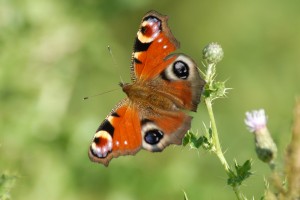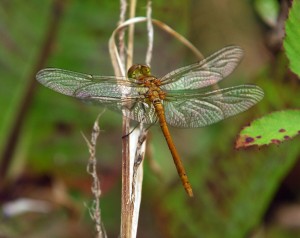Butterflies and Dragonflies
 With Autumnwatch being on our televisions this week, we thought we would share with you a bit about what they are discussing. One of the main areas they are covering is how the weather is changing and how is effecting different species.
With Autumnwatch being on our televisions this week, we thought we would share with you a bit about what they are discussing. One of the main areas they are covering is how the weather is changing and how is effecting different species.
Did you know this year has been a bad year for butterflies but a good year for dragonflies at WWT Martin Mere? Can anyone guess why? One of the key reasons is because dragonflies lay their eggs under water; they have a higher survival rate because of this, they are much hardier insects than butterflies. However butterflies are a more important insect than most people think, butterflies can tell us a lot about the ecosystem. And from recent reports we have seen a decline in butterfly populations, 72 per cent of butterfly and moth species have declined in the last ten years, and 54 per cent have decreased in the UK. Even your most common garden butterfly’s have declined have dropped by 24 per cent. We have experienced some of Britain’s worst weather this year with April being the wettest month on record since 1920. April tends to be flying season for butterflies and due to the poor weather they are unable to survive. Butterflies needs weather conditions to be sunny, dry, and warm to get them flying around. If they’re not flying around, they’re not feeding and if they’re not feeding they’re not going to survive for very long. Also there will not be a great opportunity for them to breed in the poor weather conditions. Low butterfly numbers can have a knock on effect on other species such as birds, also plants can be affected. However dragonflies can thrive in wet conditions as they are wetland creatures and love the wetland areas. Dragonflies lay their eggs under water and they have more of a survival rate because of this. Dragonflies can be seen anywhere there is water.
and if they’re not feeding they’re not going to survive for very long. Also there will not be a great opportunity for them to breed in the poor weather conditions. Low butterfly numbers can have a knock on effect on other species such as birds, also plants can be affected. However dragonflies can thrive in wet conditions as they are wetland creatures and love the wetland areas. Dragonflies lay their eggs under water and they have more of a survival rate because of this. Dragonflies can be seen anywhere there is water.

